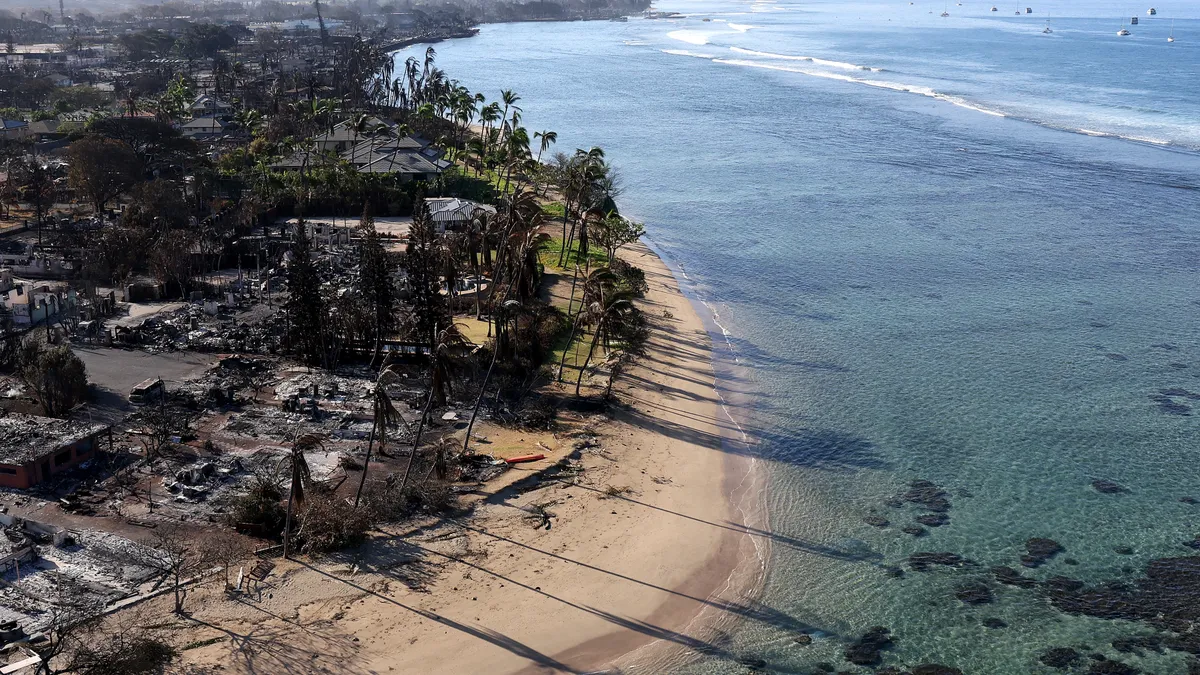Dive Brief:
- Deadly wildfires in Maui scorched farm lands, potentially setting back Hawai’i’s agricultural industry as it looks to rebound from the demise of sugarcane and pineapple plantations.
- Fires on the east side of Maui burned through some agricultural areas, Brad Rippey, a meteorologist at the U.S. Department of Agriculture, said in an agency radio update. Affected lands were once planted for sugarcane but converted to other crops in recent years.
- Hawai’i has worked to diversify its agricultural industry in recent years to decrease its reliance on imports. The Hawai’i Department of Agriculture announced last week it would establish an emergency agricultural loan program to help farmers and ranchers rebuild.
Dive Insight:
Hawai’i has taken great strides to prop up its agriculture industry through marketing campaigns encouraging consumers to buy local. Up to 90% of the state’s food supply is imported, according to the Hawai’i agriculture department.
But extreme weather events and other challenges have hindered the state’s industry. On the Island of Hawai’i, which also saw wildfires, some of the most iconic crops including macadamia nuts and tropical fruit were impacted by volcanic activity and invasive pests, according to Hawaii’s agriculture department.
Agricultural acreage on Maui plummeted following the 2016 closure of Hawaii Commercial & Sugar Company, the island’s last sugarcane plantation. However, the state's agriculture industry is slowly rebuilding itself, increasing pasture lands and planting more diverse crops.
Abandoned agricultural lands may have helped fuel the fires, which have killed nearly 100 people so far and is considered the deadliest U.S. wildfire in a century. The spread of non-native grasses and expansion of idled agriculture lands has dramatically increased fire risk in Hawai’i, according to a 2021 report from the County of Maui.
A swift moving fire in 2022 tore through 150 acres of active farmland, making it among the most destructive in Hawai’i’s history. As fires become more frequent, experts say the state may need to transform land management.
“We can reduce the risk of wildfires on a larger scale by modifying vegetation and implementing animals for grazing wide areas,” Clay Trauernicht, a wildfire expert with the University of Hawaiʻi at Mānoa, said in a blog post. “We can also modify irrigation, plant more trees and alter landscapes.”











